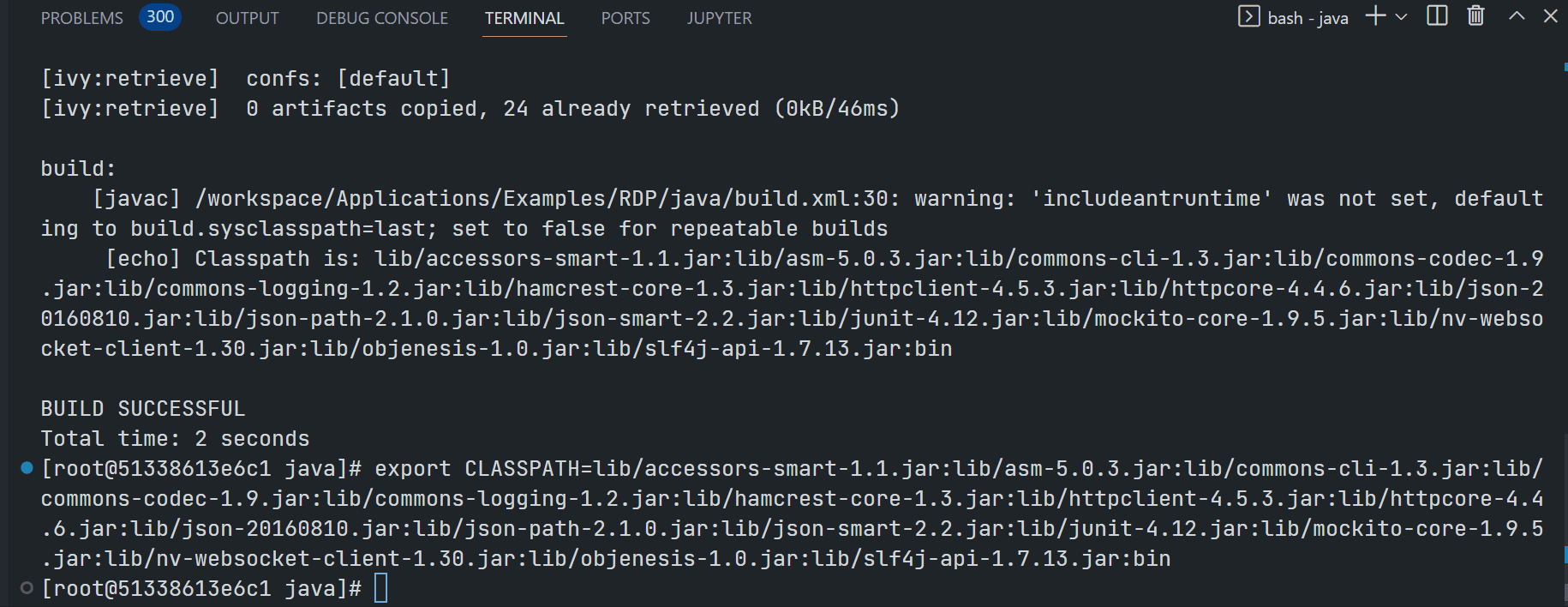
Introduction
Last Update: May 2024.
Important Note: If you are using the Wealth solution (Pricing Streaming Optimized Service or Pricing Streaming Service), the products currently support Authentication Version 1 only (As of May 2024). Please contact your LSEG representative to verify if you are using Wealth or RTO solution.
Refinitiv Data Platform (RDP) gives you seamless and holistic access to all of the Refinitiv content (whether real-time or non-real-time, analytics or alternative datasets), commingled with your content, enriching, integrating, and distributing the data through a single interface, delivered wherever you need it. As part of the Refinitiv Data Platform, the Refinitiv Real-Time - Optimized (RTO) gives you access to best-in-class Real-Time market data delivered in the cloud. Refinitiv Real-Time - Optimized is a new delivery mechanism for RDP, using the AWS (Amazon Web Services) cloud.
The RTO utilizes the RDP authentication service to obtain Access Token information. The RDP's Version 2 Authentication is a newly introduced authentication service for RTO. It is based on the industry-standard OAuth 2.0 - Client Credentials model with a lot of updates, changes, and benefits over Version 1 Authentication for the RTO users, such as, instead of using the oAuth2.0 Password Grant and Refresh Token Grant like used in Version 1 authentication, Version 2 generate an access token and once connected to the Refinitiv Real-Time Optimized with an access token, there is no need to renew the access token as the login session will remain valid until the application disconnects or is disconnected from RTO.
The V2 Authentication is a new authentication service for Refinitiv Real-Time Optimized (RTO). This document aims for helping developers to understand how to use the WebSocket API with the V2 Authentication including updating the URL and body of the authentication request to be V2 Authentication. Plus, handle the response returned and use the token from the response in the Service Discovery and Login request to RTO as usual.
For more detail about the V2 Authentication overview and concept, please check this Getting Started with V2 Authentication document.
V2 Authentication Summaries
The V2 Authentication is based on the OAuth 2.0 - Client Credentials model with the following details:
API Endpoint
API URL endpoint: http://api.refinitiv.com/auth/oauth2/v2/token (please be noticed the v2 API version)
Request Parameters
The V2 Authentication does not use the Password Grant/Refresh Grant model, all connections (initial connection and re-new) use a grant_type of client_credentials to get access token information.
The V2 Authentication requires the following access credential information in the HTTP request parameters:
- grant_type: The grant_type parameter must be set to client_credentials.
- client_id: The client_id is a public identifier for apps.
- client_secret: The client_secret is a secret known only to the application and the authorization server. It is essential to have the application’s password associated with the client ID.
- scope (optional): Limits the scope of the generated token so that the Access token is valid only for a specific data set
Note: The V2 client_id is not the same value as the V1 client_id which is an app key of the V1 - Password Grant Model.
Version 2 Authentication Benefits Over Version 1
- Longer Access Token time (V1: 10 minutes vs V2: 120 minutes).
- Version 2 Authentication produces a single Access Token, which is easier to manage.
- Simplify an Access Token renewal process
- The application/API does not need to renew an Access Token (HTTP/RSSL-WebSocket) as long as the streaming channel (WebSocket/RSSL) is active, even if that session time passes the expires_in period. The consumer application only need re-request an Access Token in the following scenarios:
- When the consumer disconnects and goes into a reconnection state.
- If the streaming channel stays in reconnection long enough to get close to the expiry time of the Access Token.
- Version 2 Authentication is a highly scalable and resilient infrastructure to support an increased user base.
- Version 2 Authentication uses standard technologies and protocols.
Prerequisite
The V2 Authentication with Websocket API requires the following dependencies.
- Authentication credential (client_id and client_secret).
- Internet connection.
- WebSocket API - RTO examples
The purpose of these examples is to connect to Refinitiv Real-Time - Optimized (RTO) to retrieve JSON-formatted market content over a WebSocket connection from a Refinitiv Real-Time Service after authenticating via Refinitiv Data Platform (RDP).
Please contact your Refinitiv representative to help you to access the RTO account and services.
How to use the WebSocket API with V2 Authentication
The Websocket API for Pricing Streaming and Real-Time Services (WebSocket API) supports the V2 Authentication manually. The V2 Authentication examples are *MarketPrice_RdpGw_ClientCred_auth* example codes available on Refinitiv/websocket-api GitHub repository (in the /Applications/Examples/RDP/ folder). The list of current examples for V2 Authentication is as follows:
- Python: market_price_rdpgw_client_cred_auth.py
- C#: MarketPriceRdpGwClientCredAuthExample/MarketPriceRdpGwClientCredAuthExample.cs
- Java: MarketPriceRdpGwClientCredAuth.java
- Go: market_price_rdpgw_client_cred_auth.go
Note: the examples use the Service Discovery feature by default.
The code explanation is based on the Python market_price_rdpgw_client_cred_auth.py file.
Sample process of using WebSocket API with V2 Authentication
Here is a sample of how to use WebSocket API to retrieve an access token from the RDP V2 Authentication with Python programming language. Then, use it with the Service Discovery endpoint to discover an available RTO WebSocket Streaming Server endpoint to be connected to.
1) Requesting Access Token from the RDP V2 Authentication
First, set the RDP Authentication Service API endpoint to v2.
auth_url = 'https://api.refinitiv.com/auth/oauth2/v2/token'
Then, send an HTTP POST request to the V2 Authentication service with the V2 - Client Credentials Grant.
def get_auth_token(url=None):
"""
Retrieves an authentication token.
"""
if url is None:
url = auth_url
data = {'grant_type': 'client_credentials', 'scope': scope, 'client_id': clientid, 'client_secret': client_secret}
print("\n" + str(datetime.now()) + \
" Sending authentication request with client credentials to ", url, "...\n")
try:
# Request with auth for https protocol
r = requests.post(url,
headers={'Accept' : 'application/json'},
data=data,
verify=True,
allow_redirects=False)
except requests.exceptions.RequestException as e:
print('Refinitiv Data Platform authentication exception failure:', e)
return None, None
Next, get the Access Token and Expires_in information from the JSON response message.
if r.status_code == 200:
auth_json = r.json()
print(str(datetime.now()) + " Refinitiv Data Platform Authentication succeeded. RECEIVED:")
print(json.dumps(auth_json, sort_keys=True, indent=2, separators=(',', ':')))
return auth_json['access_token'], auth_json['expires_in']
2) Requesting Service Discovery
The application can request the list of RTO Streaming servers from RDP Service Discovery (/streaming/pricing/v1/ endpoint) with the same logic as V1 Authentication. This service accepts both Access Token V1 and V2. The source code does not need to change/update anything.
try:
r = requests.get(url, headers={"Authorization": "Bearer " + auth_token}, params={"transport": "websocket"}, allow_redirects=False)
except requests.exceptions.RequestException as e:
print('Refinitiv Data Platform service discovery exception failure:', e)
return False
3) Connecting to RTO WebSocket Streaming Server
This step is the same as the V1 Authentication. The consumer application initiates a WebSocket connection to the desired RTO WebSocket endpoints. Once the connection establishes successfully, the application needs to send the Access Token with the JSON Login message with a WebSocket connection.
The JSON Login message structure is as follows:
{
"ID": 1,
"Domain": "Login",
"Key": {
"NameType": "AuthnToken",
"Elements": {
"ApplicationId": "<APP ID>",
"Position": "<Position>",
"AuthenticationToken": "<Access Token>"
}
}
}
The V2 Authentication Python code is shown below.
def _send_login_request(self, authn_token):
"""
Send login request with authentication token.
Used both for the initial login and subsequent reissues to update the authentication token
"""
login_json = {
'ID': 1,
'Domain': 'Login',
'Key': {
'NameType': 'AuthnToken',
'Elements': {
'ApplicationId': '',
'Position': '',
'AuthenticationToken': ''
}
}
}
login_json['Key']['Elements']['ApplicationId'] = app_id
login_json['Key']['Elements']['Position'] = position
login_json['Key']['Elements']['AuthenticationToken'] = authn_token
self.web_socket_app.send(json.dumps(login_json))
Requesting data from RTO WebSocket Streaming Server
This part has the same logic. Nothing changed.
Access Token Renewal
As mentioned above about V2 Authentication, the application/API does not need to renew an Access Token (HTTP/RSSL-WebSocket) as long as the streaming channel (WebSocket/RSSL) is active.
However, if the application disconnects or is disconnected from the RTO Streaming server, the application needs to re-request an Access Token in the following scenarios:
- When the consumer disconnects and goes into a reconnection state.
- If the streaming channel stays in reconnection long enough to get close to the expiry time of the Access Token.
Example code:
while True:
# NOTE about connection recovery: When connecting or reconnecting
# to the server, a valid token must be used. Upon being disconnecting, initial
# reconnect attempt must be done with a new token.
# If a successful reconnect takes longer than token expiration time,
# a new token must be obtained proactively.
# Waiting a few seconds before checking for connection down and attempting reconnect
time.sleep(4)
if not session1.web_socket_open or ( session2 and not session2.web_socket_open ) :
if session1.reconnecting or ( session2 and session2.reconnecting ) :
curTS = time.time()
if (int(expire_time) < 600):
deltaTime = float(expire_time) * 0.90
else:
deltaTime = 300
if (int(curTS) >= int(float(tokenTS) + float(deltaTime))):
auth_token, expire_time = get_auth_token()
tokenTS = time.time()
else:
auth_token, expire_time = get_auth_token()
tokenTS = time.time()
if auth_token is not None:
if not session1.disconnected_by_user:
session1.reconnecting = True
session1.connect()
if session2 and not session2.disconnected_by_user:
session2.reconnecting = True
session2.connect()
else:
print("Failed authentication with Refinitiv Data Platform. Exiting...")
sys.exit(1)
The code above checks if it is the initial disconnection, and re-requests a new Access Token with the same Client Credential Grant request.
if session1.reconnecting or ( session2 and session2.reconnecting ) :
# Check Time Logic
else:
auth_token, expire_time = get_auth_token()
tokenTS = time.time()
Then, it sets the application's state to the reconnection state and tries to re-connect to the RTO WebSocket streaming server using the new Access Token.
else:
auth_token, expire_time = get_auth_token()
tokenTS = time.time()
if auth_token is not None:
if not session1.disconnected_by_user:
session1.reconnecting = True
session1.connect()
While the application's state is in the reconnection state, if it still cannot connect to the RTO WebSocket streaming server and the time gets close to the expiry time of the Access Token, the application must re-request the new Access Token for the next reconnection attempt.
if session1.reconnecting or ( session2 and session2.reconnecting ) :
curTS = time.time()
if (int(expire_time) < 600):
deltaTime = float(expire_time) * 0.90
else:
deltaTime = 300
if (int(curTS) >= int(float(tokenTS) + float(deltaTime))):
auth_token, expire_time = get_auth_token()
tokenTS = time.time()
else:
# Re-request Access Token for an initial disconnect
Note: The V1 Authentication workflow is different. It re-requests the Access Token every 8-9 minutes with the Refresh Grant, then re-sends the JSON Login message with that new Access token.
Running Examples
The V2 Authentication examples are *MarketPrice_RdpGw_ClientCred_auth* example codes available on Refinitiv/websocket-api GitHub repository (in the /Applications/Examples/RDP/ folder).
Python WebSocket - Running
$>python market_price_rdpgw_client_cred_auth.py --clientid <clientid> --clientsecret <clientsecret>
Example Run Result with Python
Java WebSocket - Running
Java MarketPriceRdpGwClientCredAuth.java:
Firstly, build and compile the project with Apache Ant.
$>ant
Next, set the Java Classpath that Ant gave you.
$>export CLASSPATH=lib/accessors-smart-1.1.jar:lib/asm-5.0.3.jar:lib/commons-cli-1.3.jar:lib/commons-codec-1.9.jar:lib/commons-logging-1.2.jar:lib/hamcrest-core-1.3.jar:lib/httpclient-4.5.3.jar:lib/httpcore-4.4.6.jar:lib/json-20160810.jar:lib/json-path-2.1.0.jar:lib/json-smart-2.2.jar:lib/junit-4.12.jar:lib/mockito-core-1.9.5.jar:lib/nv-websocket-client-1.30.jar:lib/objenesis-1.0.jar:lib/slf4j-api-1.7.13.jar:bin
Then, run the example with the following command:
$>java MarketPriceRdpGwClientCredAuth --clientid <ClientID> --clientsecret <ClientSecret> --ric /EUR=
Summary
The RDP Version 2 Authentication simplifies the usage of access tokens when connecting to Refinitiv Real-Time Optimized. It uses the industry-standard [OAuth 2.0 - Client Credentials model] with a client ID, and client secret credentials instead of a username, password, and client ID (application key). The major advantage for real-time users is the applications don’t need to renew access tokens at every specific interval as the access token used by the application will remain valid until the application disconnects or is disconnected from Refinitiv Real-Time Optimized.
To migrate applications to use the RDP Version 2 Authentication for WebSocket API developer, even though you need to manually update the application source code to use new HTTP and WebSocket connections, the V2 workflow is simple to operate when compared to the previous one.
However, in case you have any questions regarding WebSocket API usage and/or its migration to V2 Authentication, you are recommended to check our Q&A Forum of WebSocket API or post the question in this forum. We're willing to assist you regarding this.
If you are using the other APIs in the Refinitiv Real-Time SDK family, please see more detail about using it with the V2 Authentication from the following resources:
- Getting started with Version 2 Authentication for Refinitiv Real-Time: Overview article
- EMA Java API: Refinitiv Real-Time Optimized Version 2 Authentication Migration Guide article
- EMA C++ API: Refinitiv Real-Time Optimized Version 2 Authentication Migration Guide article
- ETA C: Refinitiv Real-Time Optimized Version 2 Authentication Migration Guide article
- ETA Java: Refinitiv Real-Time Optimized Version 2 Authentication Migration Guide article
References
For further details, please check out the following resources:
- Refinitiv Real-Time SDK Family page.
- Refinitiv Real-Time SDK C/C++ page on the Refinitiv Developer Community website.
- Refinitiv Real-Time SDK Java page.
- Refinitiv WebSocket API page.
- Getting started with Version 2 Authentication for Refinitiv Real-Time: Overview article
- EMA Java API: Refinitiv Real-Time Optimized Version 2 Authentication Migration Guide article
- EMA C++ API: Refinitiv Real-Time Optimized Version 2 Authentication Migration Guide article
- ETA C: Refinitiv Real-Time Optimized Version 2 Authentication Migration Guide article
- ETA Java: Refinitiv Real-Time Optimized Version 2 Authentication Migration Guide article
- OAuth 2.0 - Client Credentials page.
- OAuth 2.0 - Access Token Response page.
- OAuth 2.0 - Password Grant page.
- OAuth 2.0 - Client Credentials Grant page.
For any questions related to this article or the RTSDK page, please use the Developer Community Q&A Forum.



